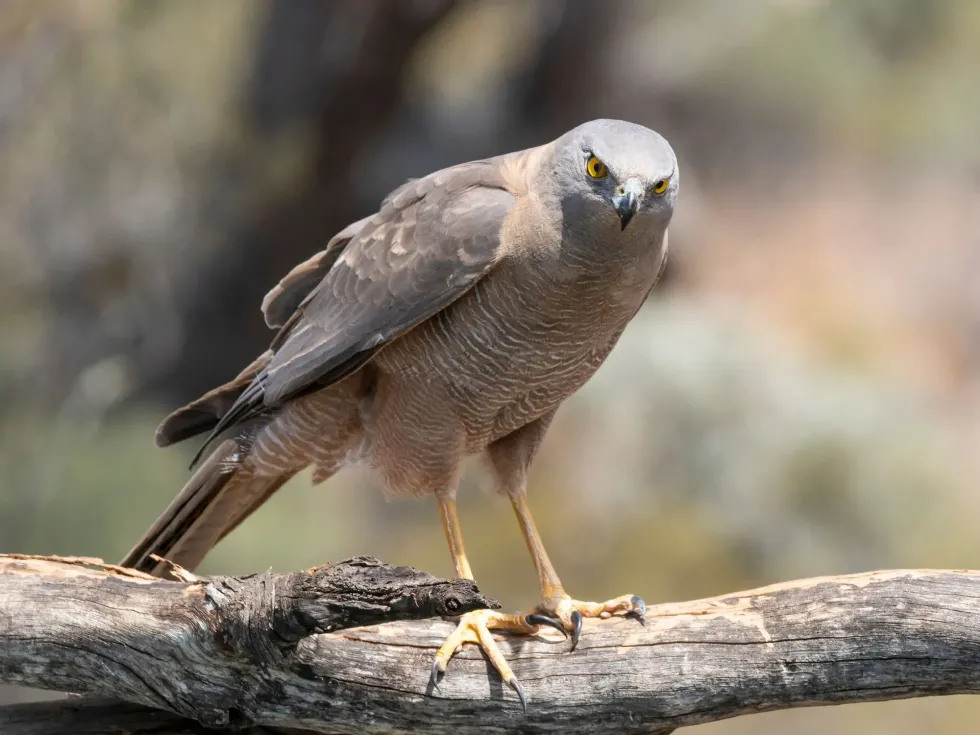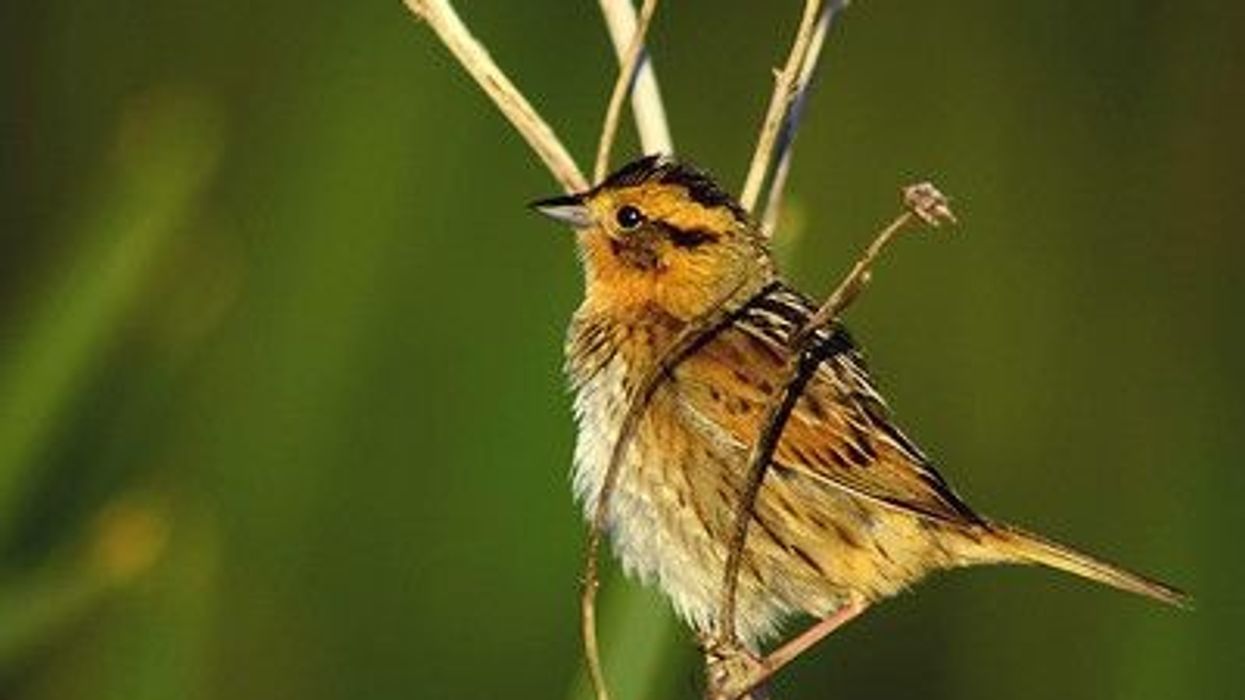The collared sparrowhawk (Accipiter cirrocephalus) is a species of sparrowhawks endemic to the continent and regions of Australia. This species belongs to the Accipiter genus and is one of the many other breeds of the Accipitridae family of the Aves class of animals.
This bird is one of the birds of prey that is often mistaken for the brown goshawk.
However, goshawks usually look fiercer and angrier than collared sparrowhawks, that being one of their distinctive features. The males and females of collared sparrowhawks are almost similar in their appearance, although females are known to be heavier and feed more than the males.
The male sparrowhawk can live for just two to three days without eating any food, whereas the female, even with a heavier body, can survive for around 8-10 days without feeding. These birds keep their population always healthy by picking out the weak amongst their own kinds.
To know more about such interesting wildlife creatures from the same family, check our articles about the black sparrowhawk and Japanese sparrowhawk.
Collared Sparrowhawk Interesting Facts
What type of animal is a collared sparrowhawk?
A collared sparrowhawk (Accipiter cirrocephalus) is a bird of prey that belongs to the Accipitridae family of animals. This bird belongs to the order of Accipitriformes and is one of the many other species of its kind.
What class of animal does a collared sparrowhawk belong to?
The collared sparrowhawk, which is a raptor (bird of prey), belongs to the Aves class of animals just like hawks and falcons.
How many collared sparrowhawks are there in the world?
Even though these birds are not threatened or endangered and are usually seen across the mainland of Australia, their exact population is not yet known.
Where does a collared sparrowhawk live?
These collared sparrowhawks are mainly found in the regions of Australia, New Guinea, and Tasmania. They are endemic to Australian regions, and a few of them might move towards the wintering regions.
What is a collared sparrow hawk's habitat?
These birds are commonly found all over the urban areas of the mainlands of Australia and are seen taking a comfortable flight near human settlements. In general, they do not stay around large ground clearings mainly because they use the covers of trees and shrubs to hide and then attack their prey.
Individuals are rarely spotted in dry forests and areas. Even though their movement is sporadic, a few of these birds migrate during the winters, especially after the breeding period.
Who do collared sparrowhawks live with?
These birds of prey are solitary in nature and are rarely seen living with anyone. The male looks out for a female during their breeding period and pairs nest in solitary and are rarely seen living in colonies.
How long does a collared sparrowhawk live?
This raptor, bird of prey, has a good lifespan ranging anywhere between 7-11 years.
How do they reproduce?
There isn't much information available about the breeding and reproduction process of these birds. Even though their courtship rituals aren't known, it is said that these birds lay their eggs between July and December.
The male birds build a flat nest, usually with green leaves. The female then lays eggs in a clutch size of two to five eggs. The most frequent clutch size for this species is between three and four eggs.
Female birds are known to incubate the eggs as the male birds look for food and protect the territory. After the nestlings are born, female birds take care of the babies by feeding them small food particles brought by the male birds. The fledging period is usually around one and a half months.
What is their conservation status?
The collared sparrowhawk (Accipiter cirrocephalus) is available in abundance across its endemic regions. The International Union for Conservation of Nature (IUCN) Red List has listed it under the Least Concern category of animals.
Collared Sparrowhawk Fun Facts
What do collared sparrowhawks look like?
This species of sparrowhawk is known for its gray-colored back and chestnut brown collar. This chestnut collar on its neck is how it gets its name, the collared sparrowhawk.
This bird has gray and white barred underparts that it flaunts during its flight. It has thin yellowish legs with a longer middle toe that helps it while catching the small birds during mid-flight. It is known for its stark yellow eyes and wide wingspan.
Its bill is dark with a yellow fleshy base. There isn't much difference in sex-based appearance, although males are usually smaller than females.
How cute are they?
The collared sparrowhawk has barred underparts that make it look stunning. Although, you can not say that they look cute due to their stark and deadly features.
How do they communicate?
This bird is known to communicate with its sharp calls of 'kik kik' or 'keek keek'. They also have sharp eyesight and use this to spot any danger or their prey whenever in flight.
How big is a collared sparrowhawk?
Collard sparrowhawks are two to three times bigger than the American kestrel. The collared sparrowhawk has an average size range of 11-14.9 in (29-38 cm) and a wingspan of 21.6-30.7 in (55-78 cm).
How fast can a collared sparrowhawk fly?
Even though the exact speed at which these collared sparrowhawks fly is unknown, they are often seen cruising in the sky while trying to spot their prey. Their flight is absolutely flawless as they are skilled to catch their prey in between their flight. They do this with the help of their long middle toe.
How much does a collared sparrowhawk weigh?
The collared sparrowhawk is a light-weight bird of prey with a weight range of just 0.27-0.48 lb (126-218 g).
What are the male and female names of the species?
The collared sparrowhawk (Accipiter cirrocephalus) is a neutral term used for both males and females.
What would you call a baby collared sparrowhawk?
A gray-colored baby collared sparrowhawk is called a nestling or a hatchling.
What do they eat?
This species of gray-brown birds are known to feed on small birds. They pick their prey between flights and focus on a hardcore carnivorous diet. They also feed on small insects like crickets, small mammals like mice, mongooses, and a few reptiles like lizards.
Are they dangerous?
Even though this brown-gray bird is included in the list of birds of prey, its kind is not considered to harm humans. In fact, they are mainly seen in human-inhabited spaces and urban areas.
Would they make a good pet?
Even if collared sparrowhawks are comfortable with human settlements, it is important to understand that they are wild birds and keeping them as pets is not advised.
Did you know...
Male collared sparrowhawks are very careful while choosing an adolescent female collared sparrowhawk for mating. This is mainly because most heavier females are known to kill their suitors.
This bird also falls prey to its look-alike, the brown goshawk. The term collared sparrowhawk vs. brown goshawk is popular mainly because of their similar physical descriptions. Although, collared sparrowhawks are known to stay calm during the breeding period while a brown goshawk behaves quite aggressively during the breeding time.
Are there sparrowhawks in Australia?
Sparrowhawks are basically woodland birds and are mainly seen in woodlands as well as gardens. Out of the 20 species of sparrowhawks, collared sparrowhawks are widely seen in Australia.
How many birds do sparrowhawks kill?
Males are known to feed on all kinds of small birds like sparrows, tits, and finches. The females, being heavier in size, prefer to feed on magpies, pigeons, crossbills, thrushes, robins, starlings, and woodpeckers too.
Here at Kidadl, we have carefully created lots of interesting family-friendly animal facts for everyone to discover! For more relatable content, check out these Combodian tailbird facts and willow warbler facts for kids.
You can even occupy yourself at home by coloring in one of our free printable pine tree and sparrow coloring pages.
Second image by Lip Kee









